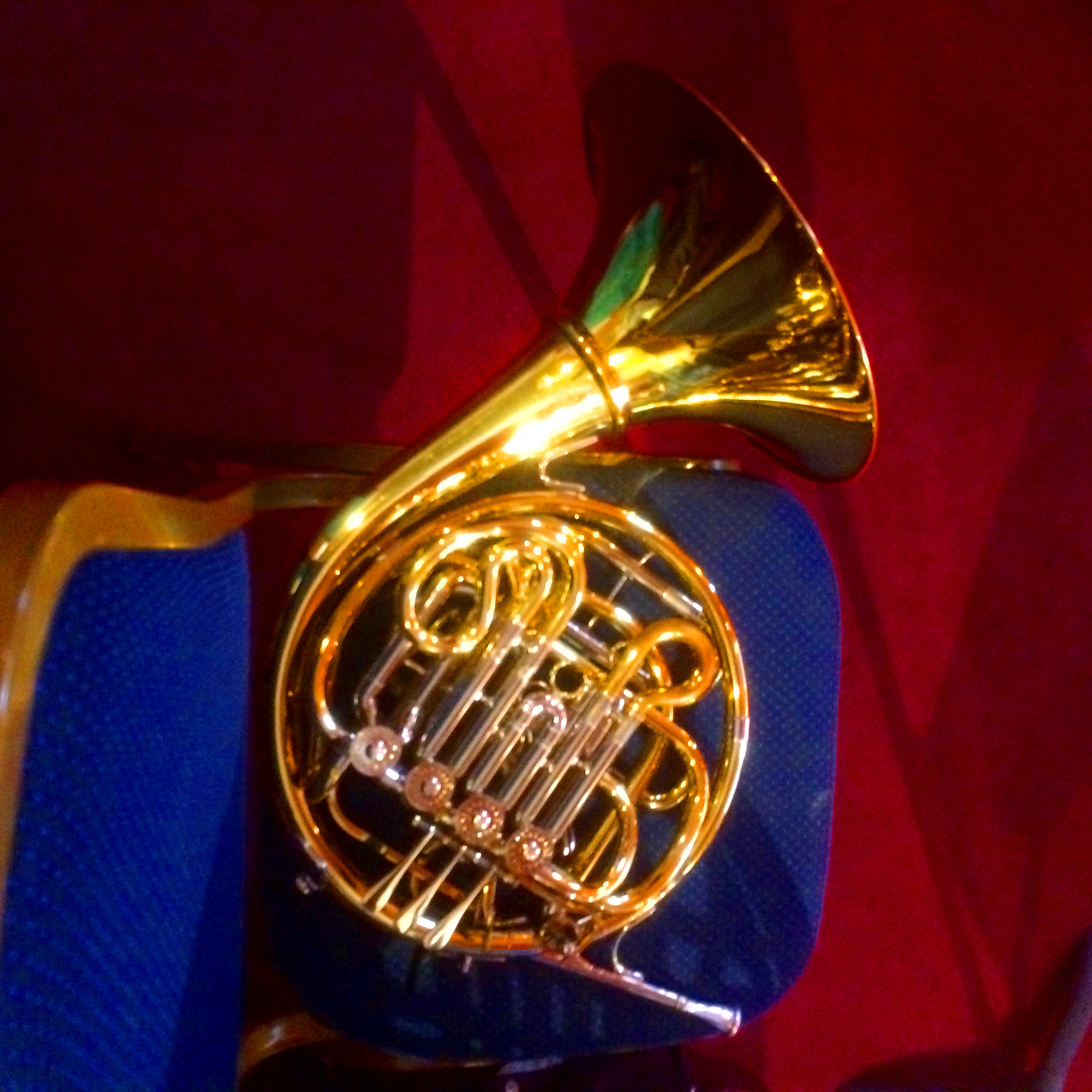Like any brass instrument, the French horn’s range is only truly limited by the player. If the player works at it and develops his or her embouchure, the French horn can play virtually any note. However, there is a typical range you should expect from this tenor instrument, depending on the level of player in question. In this article, we will discuss what is possible for beginner and intermediate players, what is most comfortable for any player, and any range differences between double and single horns.
Expected Range
The expected range of any horn player usually depends on his or her level of experience. That being said, some beginners may naturally drift toward high or low range because of their embouchure development or switching from another instrument. For example, trumpet players switching to horn tend to find the high range on the horn easier than its low range due to the size difference in mouthpieces.
For the average beginner, however, you should expect about a three-octave range from G below the staff to G sitting on top of the staff. This is the minimum you could expect someone who has been playing for a few years to reach, especially if the player is switching to French horn after a few years of experience on another brass instrument. No one is expecting the notice to perform Schumann’s Concertpiece for Four Horns.
Keep this expected range in mind, whether you are selecting ensemble or solo music for a student, as well as the amount of playing involved in each piece. In educational band music, French horns tend to play more notes than other brass instruments, which will affect how well a beginner will be able to play in the higher register later in the piece.
In general, if you are to err on either the low or high range for a piece, it is better to go with stretching the low range for a few reasons. Because being accurate in the high range on the French horn requires a greater deal of embouchure strength or endurance, the beginner is not guaranteed to reach them comfortably by the time of performance. If they do, there is a greater likelihood for mistakes due to muscle strain and the closeness of partials. Low notes, on the other hand, require muscle relaxation and fine-tuning. By working downwards through warm up exercises, the beginner horn player is more likely to stretch his or her lower range by performance time with greater accuracy.
There is still room for misfires, of course, but lower notes on the horn are usually doubled by other instruments in ensemble music since they do not project as well. Unless you are Sarah Willis, in which case you will have no problem projecting your low range.
Comfortable Range
When it comes to a comfortable range, we will assume this is for the intermediate player. These students are typically 8th-10th graders that practice regularly. It should be safe to assume that the expected range discussed above is perfectly comfortable for intermediate players, but there is still a comfortable range for every player, regardless of skill level. The most comfortable range falls between the G or A below middle C to the F or G at the top of the staff. Beyond either of these notes, it takes a little more effort and focus to be accurate.
The reason for the higher range getting tougher in the upper notes is the closeness of partials on the French horn. Like every brass instrument, the higher the pitch, the closer the partials are together because of how the overtone series lies. The French horn is unique, however, in how close its partials are in its comfortable range. Those partials get even closer above the top F, which explains how professionals are able to play high, stepwise passages on a valveless horn.
Although the partials are more spread out in the low range, notes below A or G are difficult simply because of the size of the French horn mouthpiece. With any other brass instrument, you have more room to extend or widen your embouchure for the low range. But the French horn has the smallest mouthpiece out of the brass family, yet it is capable of sounding very full on low tones because of its large bell and long tubing.
For anyone looking to improve their comfortable range, flexibility exercises will yield the best results. This requires you to work the high and low ranges separately, then try running through both, nonstop, using scales or arpeggios. Once you are able to start playing from one your lowest notes to your highest fairly smoothly, make wide-range exercises part of your daily routine. Always start from your lowest note and work to play all the way to your highest note in one breath. Keeping the mouthpiece on your face the entire scale will build muscle memory for transitioning through the horn’s registers and help to keep your embouchure open.
If you are looking for print resources, Teuber’s Progressive Studies in Flexibility and Range Development for French Horn is a great exercise book. You shouldn’t rely on this book for etudes to fill an entire practice session, but add some of these to your warmup routine. For more involved etudes, I recommend Kopprasch’s Sixty Selected Studies for French horn. There are two volumes of these and both are great. They contain a wide range of studies, from arpeggio-focused to slow, legato melodies. But more importantly, they include exercises that are specifically designed to work a certain range or to push your flexibility in general. You won’t find a horn teacher out there who doesn’t work from Kopprasch.
Single vs. Double French Horn
On the surface, there is not much difference between the ranges of a single horn and a double. Intermediate or experienced players will undoubtedly notice a difference in feel between the two, but nothing drastic. French horns naturally fall in the key of F, which is why most horn music will say “Horn in F” at the top. A single French horn exists only in this key with a single layer of valve tubing. Double French horns have a second layer of tubing that is activated with an added thumb trigger. When the trigger is depressed, the horn is transposed to B-flat. However, horn players never transpose their music, they just learn a second set of fingerings for each note, many of which overlap.
Because a double horn can be played in two different keys, it has two overtone sets. One of the greatest advantages of having a double french horn is its easier upper range. Using the B-flat or trigger side essentially extends the close partials, making higher notes easier to hit accurately. For example, whereas the F horn’s partials start to grow slimmer around B or C on the staff, this doesn’t happen until about E or F above that with the trigger pressed. Thus, double French horns have a more comfortable high range. On the low end, double horns offer some alternate fingerings, but only a few notes feel more open than the F side. I personally do not use the trigger for anything in the low register because I find the notes easier to tune without the trigger.
Overall, there is not a huge difference in the expected range between single and double French horns, but double horns do make the upper register slightly easier to play. I also find a subtle difference in tone between the two in the mid to upper range. Single horns tend to sound warmer and more muffled while double horns sound full and open since they allow easier projection. With enough practice, though, you can make both registers sound flawless on just about any horn.
Still confused about double and single horns and all the buttons and triggers? Check out the video below for a brief fly-by tour:
In Conclusion
With scales, embouchure flexibility, practice and a lot of personal patience, the range of the French horn can be very broad. With the addition of a double French horn's capabilities, reaching those stratospheric sounds can be even easier.








